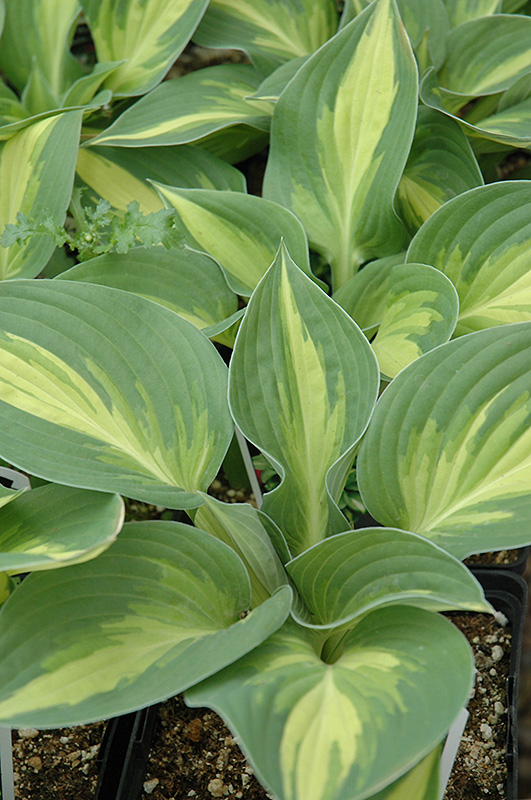Get ready to ignite your excitement and cultivate unforgettable memories
with Wallace's Garden Center Events! We're thrilled to invite you to a world of
enchanting experiences, where every gathering is a celebration of nature, community, and pure fun.
Plant Finder
Plant Height: 20 inches
Flower Height: 28 inches
Spacing: 20 inches
Sunlight:
![]()
![]()
Hardiness Zone: 3
Other Names: Plantain Lily, Funkia
Description:
This gorgeous variety has wide green margins and celadon green jetting into a narrow yellow center that brightens to white; provides beautiful texture and contrast to other plants; lavender spikes of flowers on tall scapes in mid-summer
Ornamental Features
Ann Kulpa Hosta features dainty spikes of lavender tubular flowers rising above the foliage in mid summer. Its attractive large textured heart-shaped leaves remain dark green in color with prominent white stripes and tinges of yellow throughout the season.
Landscape Attributes
Ann Kulpa Hosta is a dense herbaceous perennial with tall flower stalks held atop a low mound of foliage. Its relatively coarse texture can be used to stand it apart from other garden plants with finer foliage.
This is a relatively low maintenance plant, and is best cleaned up in early spring before it resumes active growth for the season. Gardeners should be aware of the following characteristic(s) that may warrant special consideration;
- Insects
Ann Kulpa Hosta is recommended for the following landscape applications;
- Mass Planting
- Border Edging
- General Garden Use
- Groundcover
Planting & Growing
Ann Kulpa Hosta will grow to be about 20 inches tall at maturity extending to 28 inches tall with the flowers, with a spread of 24 inches. When grown in masses or used as a bedding plant, individual plants should be spaced approximately 20 inches apart. Its foliage tends to remain dense right to the ground, not requiring facer plants in front. It grows at a slow rate, and under ideal conditions can be expected to live for approximately 10 years. As an herbaceous perennial, this plant will usually die back to the crown each winter, and will regrow from the base each spring. Be careful not to disturb the crown in late winter when it may not be readily seen!
This plant does best in partial shade to shade. It prefers to grow in average to moist conditions, and shouldn't be allowed to dry out. It is not particular as to soil type or pH. It is somewhat tolerant of urban pollution. This particular variety is an interspecific hybrid. It can be propagated by division; however, as a cultivated variety, be aware that it may be subject to certain restrictions or prohibitions on propagation.


